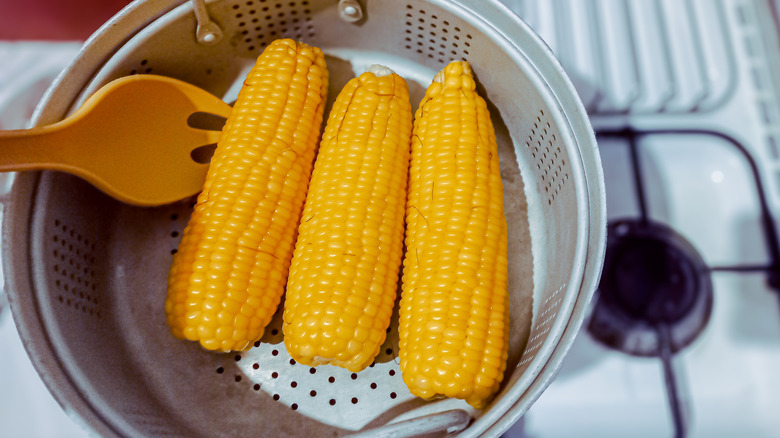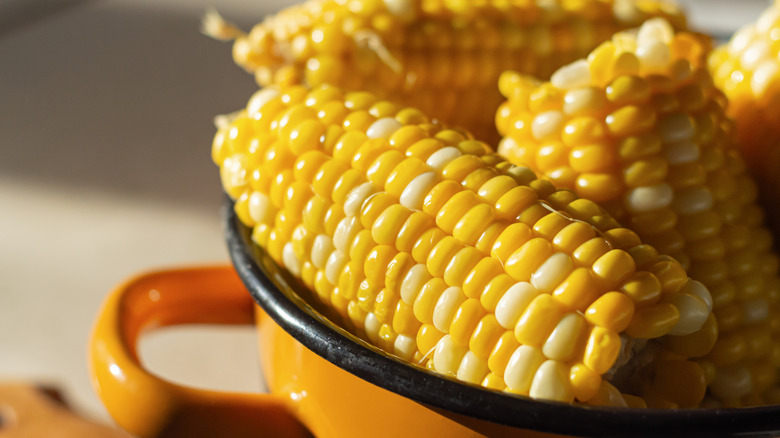How Long To Boil Fresh Corn On The Cob For The Best, Juiciest Results
Fresh corn on the cob is a classic part of summer cuisine, but it can be deceptively easy to mess up. Ears can overcook in mere minutes as the kernels become shriveled and mushy, even when immersed in water. Fortunately, properly boiling this grain also isn't that difficult — the process just requires a few minutes of focus.
To perfectly cook fresh corn on the cob, place the ears in boiling water for just three to five minutes. That may seem brief, but the pectin content of fresh corn breaks down under relatively low heat, which is why overcooked corn turns mushy. The very freshest ears can cook in as little as two minutes. If you're not sure how long to boil your corn, err on the side of less cooking time, not more.
Watch your corn as it boils and you may see that the changes it undergoes while cooking are subtle. Kernels will get slightly bigger due to the corn's high moisture content expanding with the heat. The corn will also slightly darken to a richer yellow hue, though this change can be easy to miss — it's just that slight. When the kernels look a bit bigger and darker, the corn is ready to be removed with tongs.
Tips for elevating your boiled corn on the cob
Purchasing already-husked corn is one of the big mistakes you may be making with corn on the cob. Husks may seem inconvenient, but they also protect the kernels inside and help keep them fresher for longer. Some people find corn husking to be difficult, but the good news is that you can also cook a perfect ear with the husk on. Just boil it for about 10 minutes, and the outer leaves should peel off much easier.
Don't forget to salt your corn water, either, though you also shouldn't overdo it. Adding salt to the water (instead of just the finished product) helps that flavor enhancer penetrate deeper in between the kernels. Keep in mind, though, that too much salt can leach moisture from the corn. Aim for a 2% solution of water and salt, or roughly 1 tablespoon of salt per quart of water.
If your freshly boiled corn on the cob is part of a larger meal, consider saving your leftover corn water for other dishes. Starchy, sweet corn water can be used as an emulsifier in much the same way that chefs use starchy pasta water to bring a sauce together. In a similar vein, the flavors of corn pair well with pasta cornerstones like tomatoes, red peppers, and Parmesan cheese.

